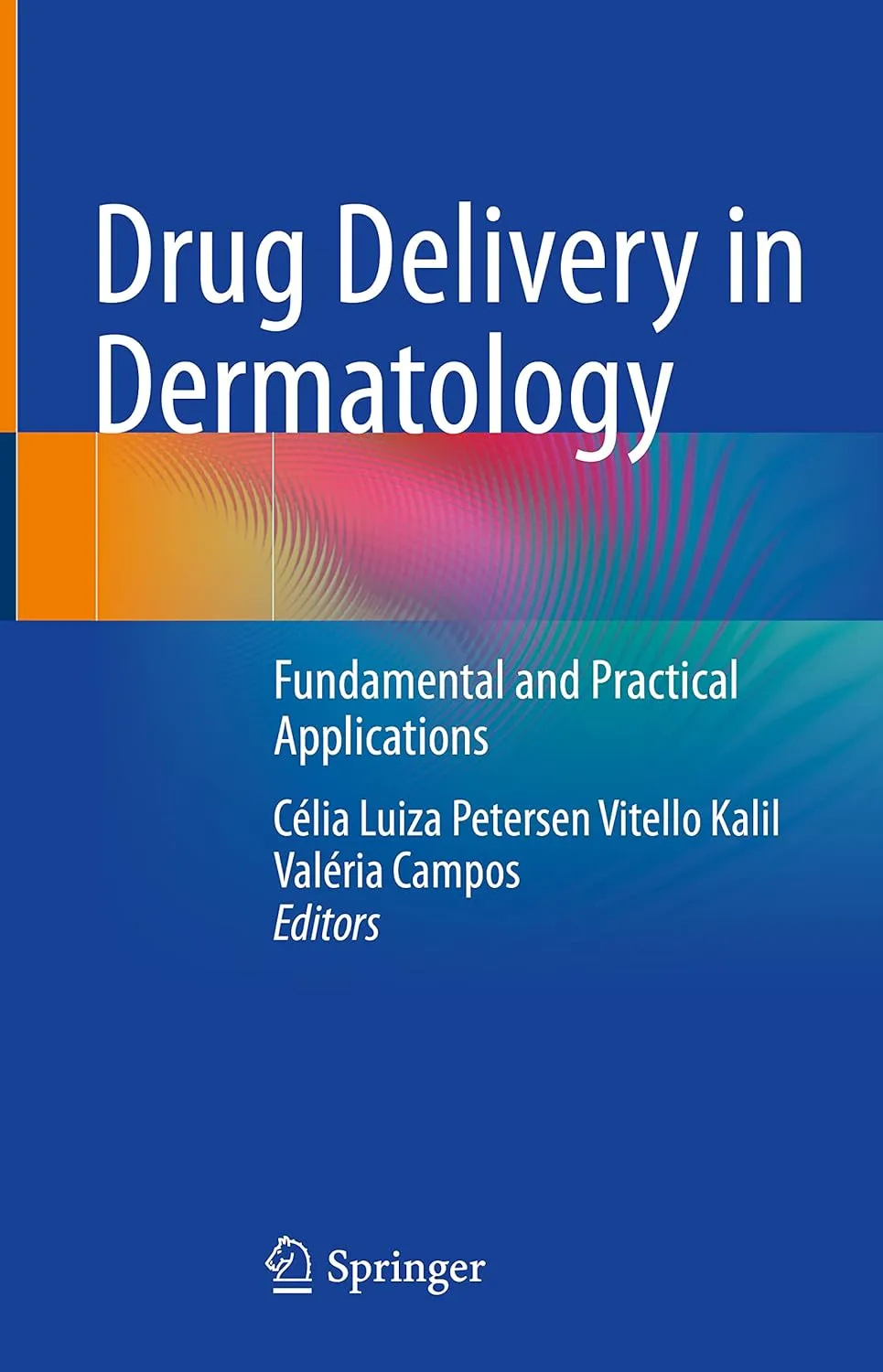Home
|
Products
|
9789356962026

Drug Delivery In Dermatology Fundamental And Practical Applications | Hardcover
by Kalil C.L.P.V.
Highlights

9783030818067
ISBN

Kalil C.L.P.V.
Author

N/A
Pages

215 gm
Weight

English
Language

2021
Year

N/A
Edition

Hardcover
Binding
₹13640
₹15156
Product Description Skin accounts for approximately 15% of an adults total body weight, with a surface of about 2m. It provides an entry and exit barrier to various substances, offers effective protection against harmful substances, microorganisms and ultraviolet radiation, and is also paramount in immunology and body homeostasis, preventing dehydration and loss of essential minerals.The topical route has a number of advantages over oral and parenteral routes: no first-pass metabolism, greater convenience resulting in better treatment compliance, lower side-effect frequency, and prompt dosing cessation if required. However, the stratum corneum allows penetration of only 1 to 5% of substances applied topically, making this application route much less efficient. Lipophilic and small molecules (up to 500 Da) can cross the stratum corneum, since keratinocytes are covered by a lipid matrix, while it is virtually impossible for hydrophilic and large drugs to cross intact, normal skin, which means that passive topical delivery is restricted. To address this, techniques have been developed aimed at optimizing drug skin penetration by means of chemical, mechanical and physical methods, such as adding permeating active agents and using occlusion, iontophoresis, microneedling, lasers and intense pulsed light, and it is now possible to deliver medication to different skin layers or transdermally to the systemic circulation.Drug delivery is a hot topic in dermatology, with a Pubmed search generating 203431 articles. Offering a detailed review of this emerging therapeutic option, including the various methods available, this unique book guides physicians and doctors in selecting the correct technologies, technique and products for each patient. From the Back Cover Skin accounts for approximately 15% of an adults total body weight, with a surface of about 2m. It provides an entry and exit barrier to various substances, offers effective protection against harmful substances, microorganisms and ultraviolet radiation, and is also paramount in immunology and body homeostasis, preventing dehydration and loss of essential minerals.The topical route has a number of advantages over oral and parenteral routes: no first-pass metabolism, greater convenience resulting in better treatment compliance, lower side-effect frequency, and prompt dosing cessation if required. However, the stratum corneum allows penetration of only 1 to 5% of substances applied topically, making this application route much less efficient. Lipophilic and small molecules (up to 500 Da) can cross the stratum corneum, since keratinocytes are covered by a lipid matrix, while it is virtually impossible for hydrophilic and large drugs to cross intact, normal skin, which means that passive topical delivery is restricted. To address this, techniques have been developed aimed at optimizing drug skin penetration by means of chemical, mechanical and physical methods, such as adding permeating active agents and using occlusion, iontophoresis, microneedling, lasers and intense pulsed light, and it is now possible to deliver medication to different skin layers or transdermally to the systemic circulation.Drug delivery is a hot topic in dermatology, with a Pubmed search generating 203431 articles. Offering a detailed review of this emerging therapeutic option, including the various methods available, this unique book guides physicians and doctors in selecting the correct technologies, technique and products for each patient.
P.when('A').execute(function(A) {
A.on('a:expander:toggle_description:toggle:collapse', function(data) {
window.scroll(0, data.expander.$expander[0].offsetTop-100);
});
});
About the Author Célia Luiza Petersen Vitello Kalil, MD, PhD, is the director of the Célia Kalil Dermatological Clinic at Porto Alegre (RS), Brazil. She holds a PhD in Medical Sciences from the Federal University of Rio Grande do Sul, Porto Alegre, Brazil and is volunteer Preceptor of the Federal University of Fronteira Sul - Passo Fundo, Rio Grande do Sul, Brazil. Dr. Kalil is a member of the Brazilian Society of Dermatology and of Dermatological Surgery; Past president of the Brazilian Society of Dermatology “ Regional Rio Grande do Sul - Brazil (1997-2000); Delegate of the Brazilian Society of Dermatology - since 2001; International Fellow Member of the American Academy of Dermatology; Member of the European Academy of Dermatology and Venerologie; Member of the Ibero-Latin American College of Dermatology and Member of Academy of Cosmetic Dermatology. Valéria Campos, MD is a visiting Professor of Dermatology and Laser at Jundiaà Medical School,Brazil and member of the Brazilian Society of Dermatology. She holds Masters in Medical Sciences from the University of São Paulo, Brazil and is specialist in Laser and Dermatology at Harvard Medical School. See more
Online store of medical books
Discover a comprehensive range of medical books at our online store. From anatomy and physiology to the latest clinical guidelines, we've got you covered.
Trusted by students, educators, and healthcare professionals worldwide. Browse top publishers and expert-authored titles in every medical specialty. Enjoy fast shipping, secure payments, and easy returns. Your one-stop destination for quality medical knowledge at your fingertips.
Whether you're preparing for exams or expanding your clinical expertise, our curated collection ensures you have the right resources at hand. Dive into detailed illustrations, case studies, and up-to-date research that enhance your understanding and practical skills.
We regularly update our inventory to include the latest editions and newly released titles, helping you stay current in the ever-evolving medical field. Our advanced search and filtering tools make finding the perfect book quick and hassle-free.
Join our community of lifelong learners and medical enthusiasts. Sign up for exclusive discounts, early access to new arrivals, and personalized book recommendations tailored to your professional interests.
